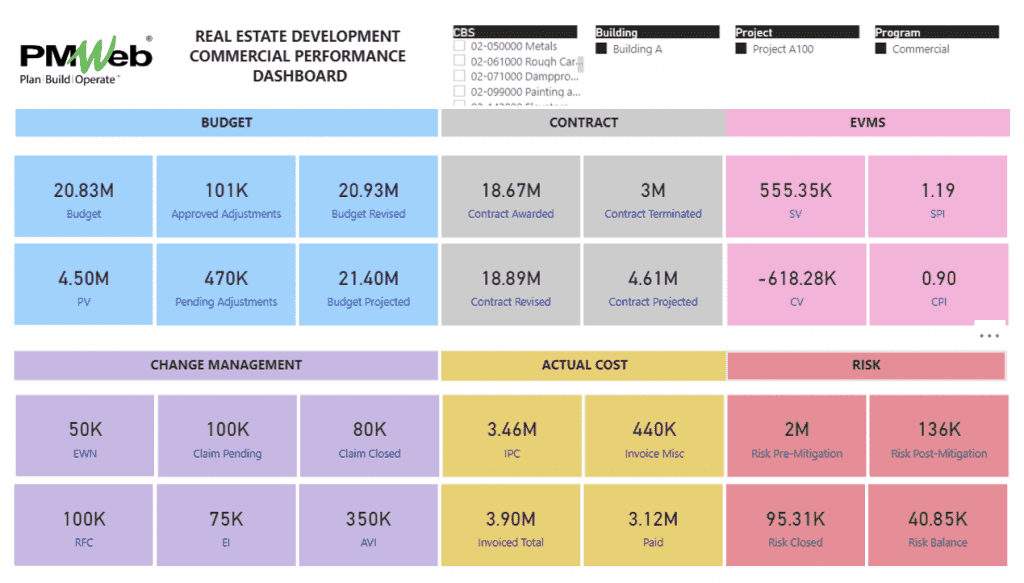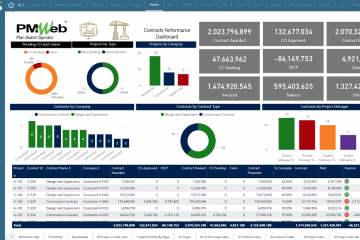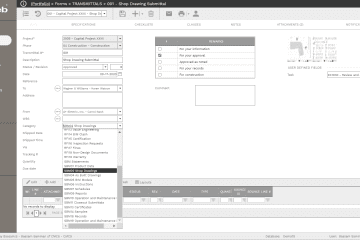For real estate developers, private equities and other entities who invest in capital construction projects always need to have a real-time single version of the truth dashboard to monitor and evaluate the commercial performance status of those projects. The commercial performance dashboard needs to report on the project or projects’ budget, contracts, changes, costs, and risks’ cost exposure. The information presented in the dashboard should be trustworthy, real-time, traceable, and auditable. The reader of this information needs to be able to select the commercial information that could be specific to a program of projects, specific projects, specific assets of a project, and to a specific cost breakdown structure (CBS) level.
Real estate developers, private equities and other entities need to access this information anytime, anywhere using any device. Of course, there are other dashboards that address other aspects of the capital construction projects delivery such as schedule, procurement, quality, health and safety, sustainability among others.
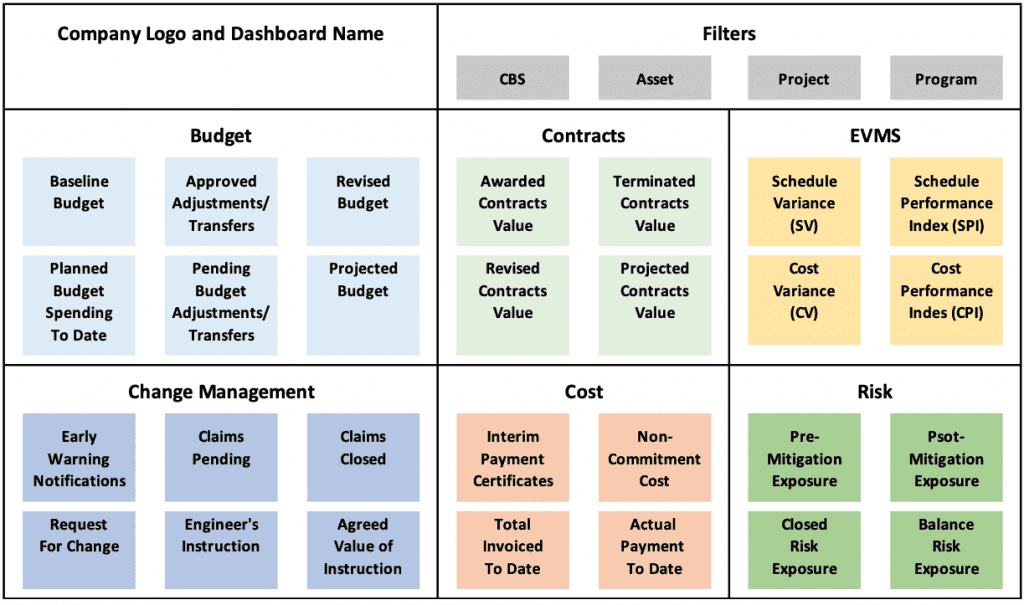
Using a web-enabled Project Management Information System (PMIS) or a construction project management software that has cost management for real estate development projects as one of its’ ready to use modules like PMWeb, enables having the needed dashboard. PMWeb has modules for cost account, cost estimate, budget, budget requests, commitments, potential change orders, change orders, progress invoices, miscellaneous invoices, accounts payable (A/P) payments, and cost worksheet. In addition, the PMWeb document management repository is used to upload and store all cost-related documents.
Commercial Reporting Levels and Selection
Accordingly, the first step in having the integrated cost management system is to have the cost breakdown structure (CBS) defined. Great care needs to be given to the created cost breakdown structure as it becomes the basis for monitoring, evaluating, and reporting the real estate development commercial performance. PMWeb allows having up to 16 levels for the cost breakdown structure although usually the levels used would not exceed 8 levels even for mega real estate development programs. For example, the CBS levels could include the levels for programs, projects within a program, buildings or assets with a project, building function or system, bid packages, and control accounts. The CBS becomes the basis for filtering, sorting, grouping, and summarizing the commercial information across the complete project’s portfolio.
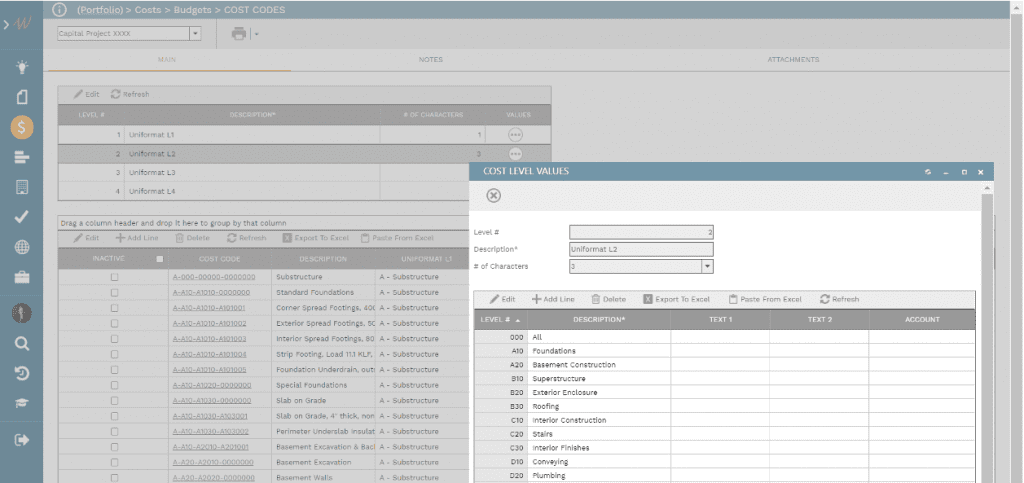
Project Budget
For any type of project including real estate development projects, the first cost management process is estimating the project cost based on the available drawings, specifications, and other information needed to estimate the project’s execution cost. All direct and indirect costs need to be part of the cost estimate including contingencies and other types of reserves for assumptions and risks. Regardless of the application used to develop the cost estimate and whether the PMWeb cost estimate module was used or not, the cost estimate needs to be imported and saved in the PMWeb cost estimate module. Having the cost estimate stored in PMWeb enables the project team to attach all supportive documents that were the basis for developing the shared cost estimate. Those documents are uploaded and stored into their specific folder in the PMWeb document management repository. In addition, the cost estimate module has a workflow to map the tasks to be performed by the different project team members needed to review and approve the cost estimate before it can be used to generate other project cost records. The workflow could include conditions to incorporate the approval authority levels as defined in the project management plan.
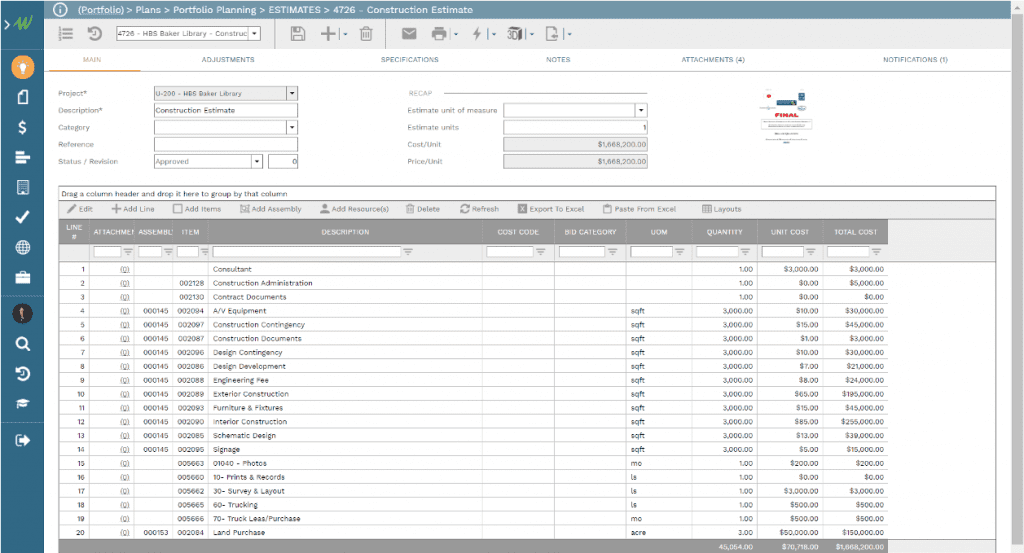
Using the approved cost estimate, PMWeb allows generating the project’s budget. The budget cost centers automatically combine the cost estimates line items that share the same cost breakdown structure levels. In case the budget needs to have different currencies for certain CBS levels, then this is possible. PMWeb allows having static as well as dynamic currency exchange rates that could have an impact on the overall budget amount. PMWeb budget module allows capturing all budget versions although only one version could have the status as approved while other versions need to be withdrawn.
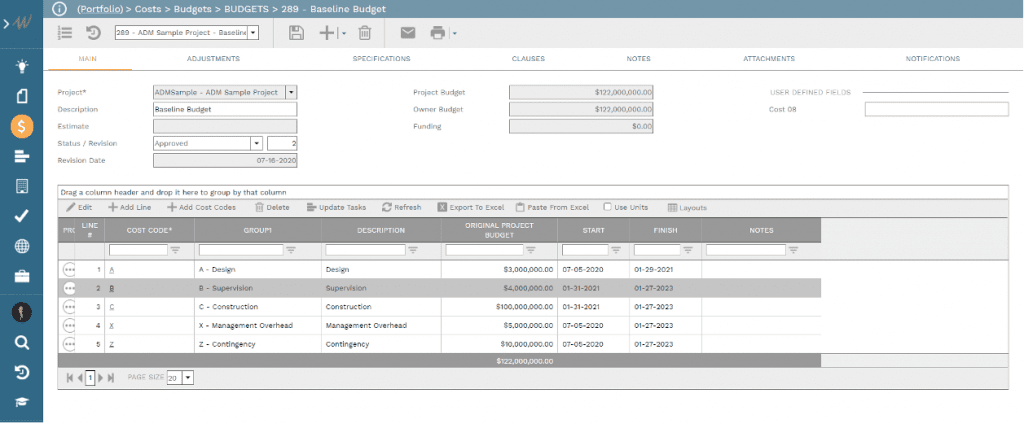
For each budget line item, the anticipated spending plan needs to be defined as this is a requirement for establishing the project budget spending outflow. PMWeb allows doing this projection by selecting the start and end dates of each budget line item and one of the budget distributions curves which could be straight, front loaded, back loaded and bell shaped. Of course, it is also possible to distribute the budget amount manually per period.
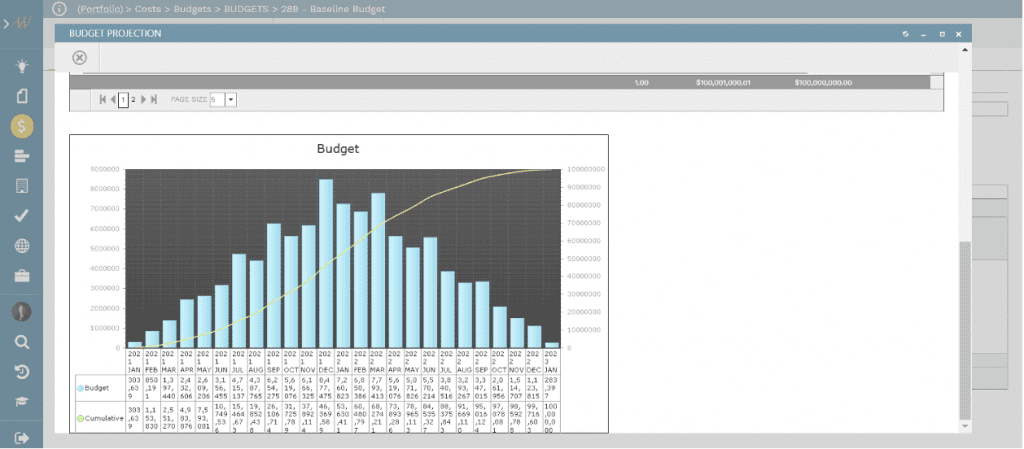
After approving the baseline budget, any changes to budget in terms of increasing or decreasing the allocated funds due to increased scope, reduced scope or simply transfer funds from one budget cost center to another, within the same project or across multiple projects are done using PMWeb budget request module. PMWeb budget request module is used to capture all pending and approved budget adjustments and transfers. All budgets and transfers need to be distributed to their relevant cost breakdown structure as well as the financial period where this adjustment needs to be displayed. The approved changes and transfers are used to calculate the revised budget. All remaining pending approval changes and transfers become the basis for calculating the projected at completion budget value.
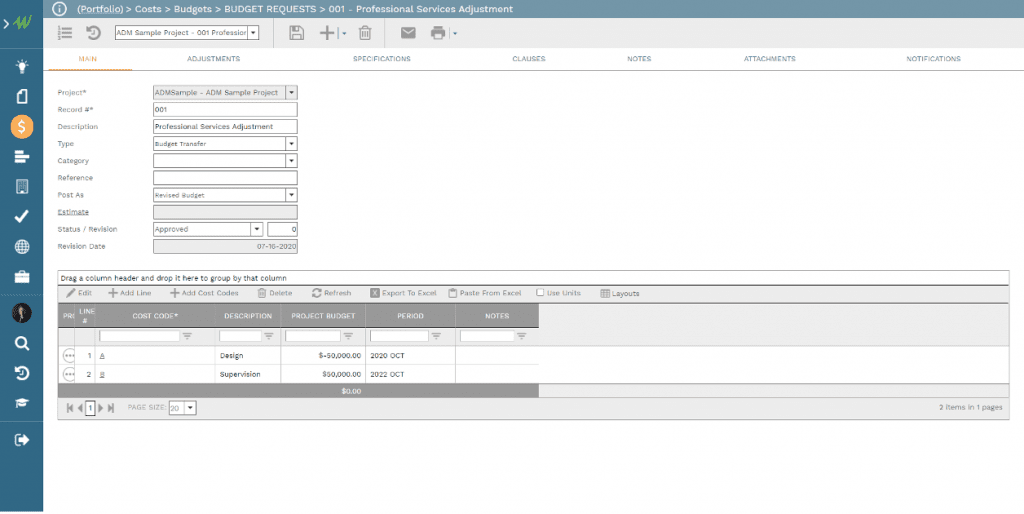
Contracts
The next step is to capture all awarded contract agreements with the engineering consultants, supervision consultants, project management consultants, contractors, main suppliers among others. The awarded value of each contract is distributed to its relevant CBS level. The contract’s detailed schedule of value or bill of quantities and other contract documents including drawings, specifications, agreement, conditions of contract, performance bonds, insurances among others is scanned and uploaded into the PMWeb document management repository and then attached to the contract agreement.
PMWeb is used to report on all current and terminated contracts. In addition, the revised contract value and projected at completion contract value are automatically calculated based on the information captured in the change management processes.
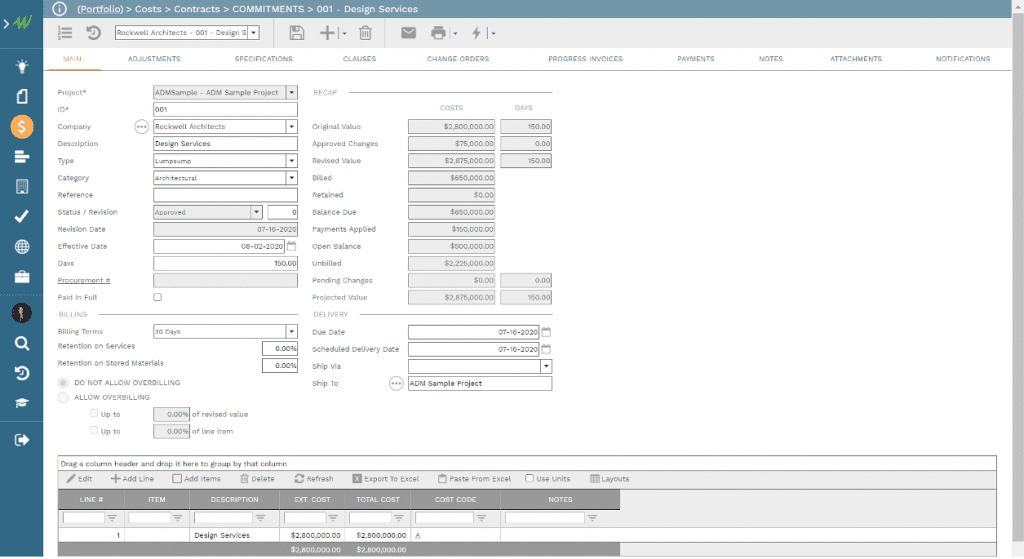
Change Management
PMWeb potential change module is used to capture the details of Request for Change (RFC) and Engineer’s Instruction (EI). The potential change order module can be also used to capture the details of other cost-related processes that such as Early Warning Notifications (EWN) and possible cost savings from Value Engineering (VE) proposals. Access rights for this module could be extended to the Engineer and Contractors in case they allowed to post those transactions direct into PMWeb.
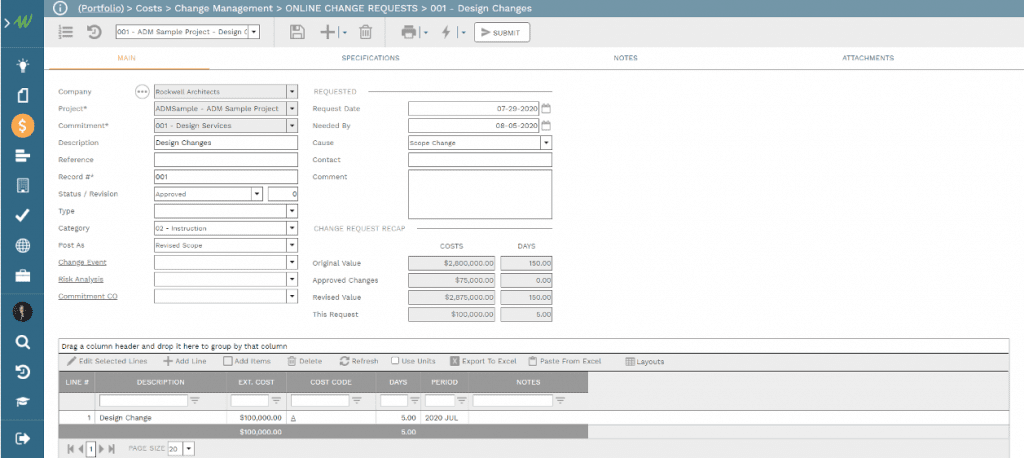
For Approved Variation Instruction (AVI), PMWeb commitment change order module is used. The AVI could be configured to allow generating AVIs from approved Request for Change (RFC) and Engineer’s Instruction (EI). The AVI includes the cost and time impact of the change. In addition, the cost part is associated with the relevant cost breakdown structure levels.
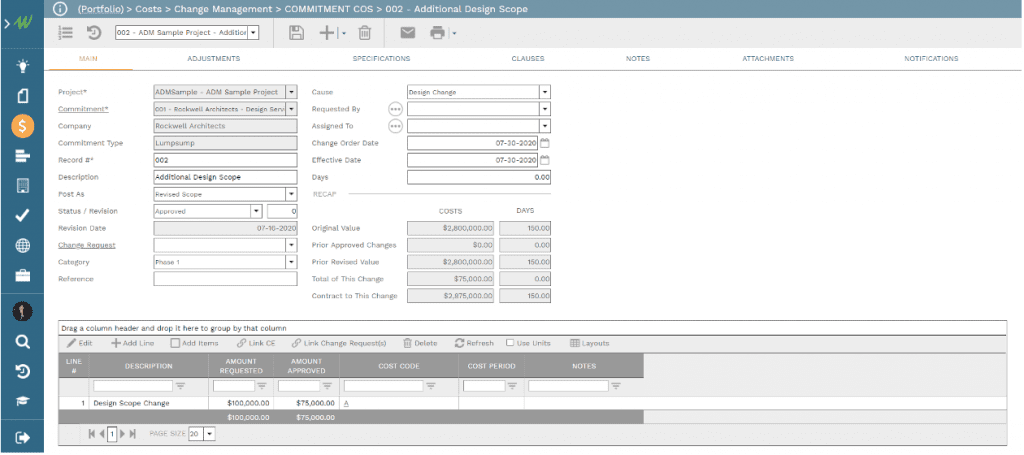
Finally, for all claims submitted by consultants and contractors, PMWeb change event module is used to capture this information. This is recommended as usually the consultants’ or contractors’ claim submissions would include a lot of documents and communications that need to be reviewed before a decision is made.
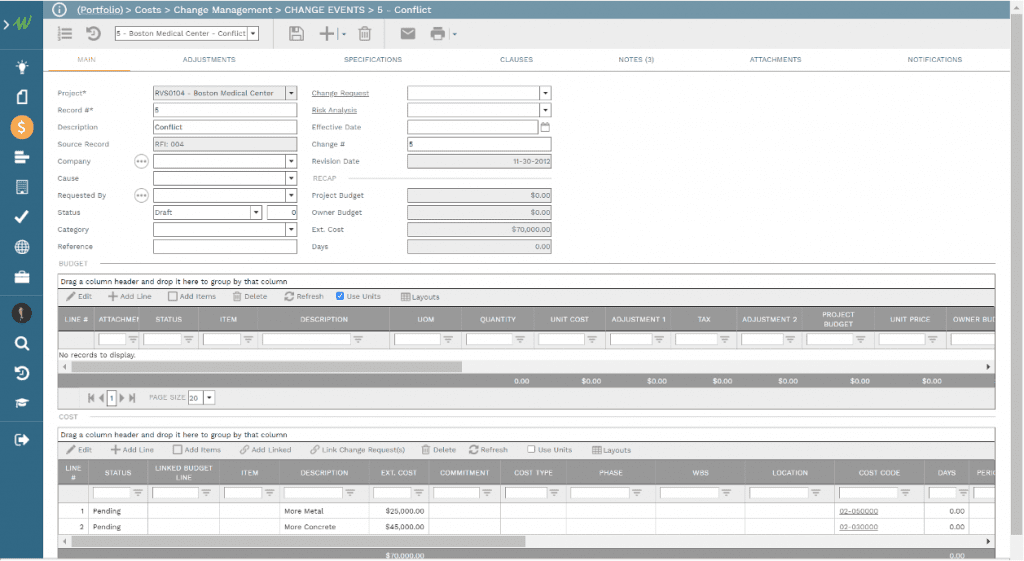
Each one of those modules could have its own workflow process for submitting, reviewing, approving or rejecting the transaction. The status of those records which will be aligned with the workflow could be submitted, returned, rejected, withdrawn, approved among others. Of course, the same principles of workflow design would apply on all other processes including cost estimate, budget, budget requests, commitment contracts among others. PMWeb visual workflow module allows temporary and permanent delegation of work review steps when needed. In addition, the workflow steps can be integrated with DocuSign digital signature if this is a requirement.
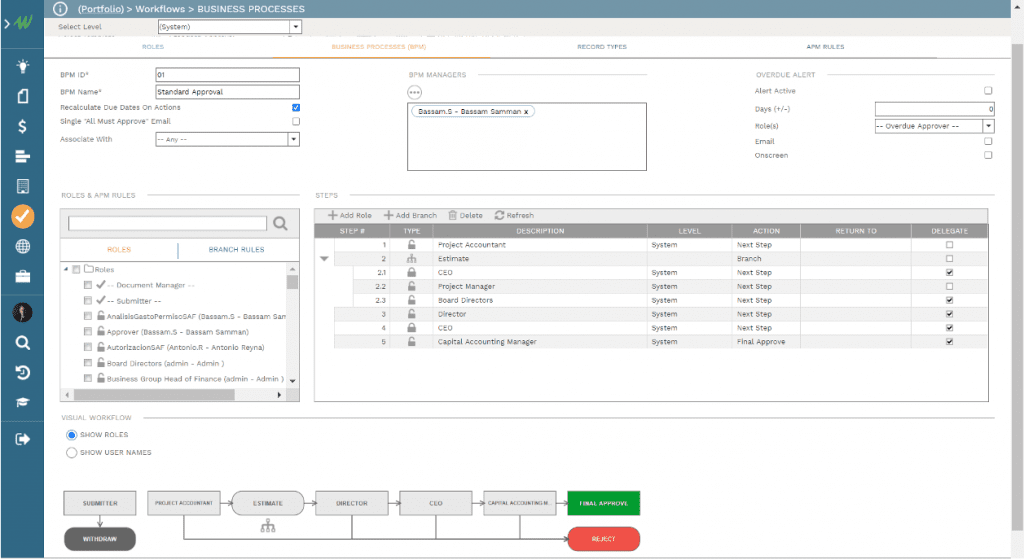
Cost
The actual cost that can be posted against a project is either related to interim payment certificates (IPC) or invoices issued against each awarded contract or other expenses that are not related to a contract. The IPC is captured using the PMWeb progress invoice module while non-commitment expenses are captured using PMWeb miscellaneous invoices and timesheet modules. The valuation of interim payment certificates can be based on the approved percent complete values for activities that are associated with each bill item. PMWeb scheduling module is used to import and store the Oracle Primavera or MS Project schedules for each progress period.
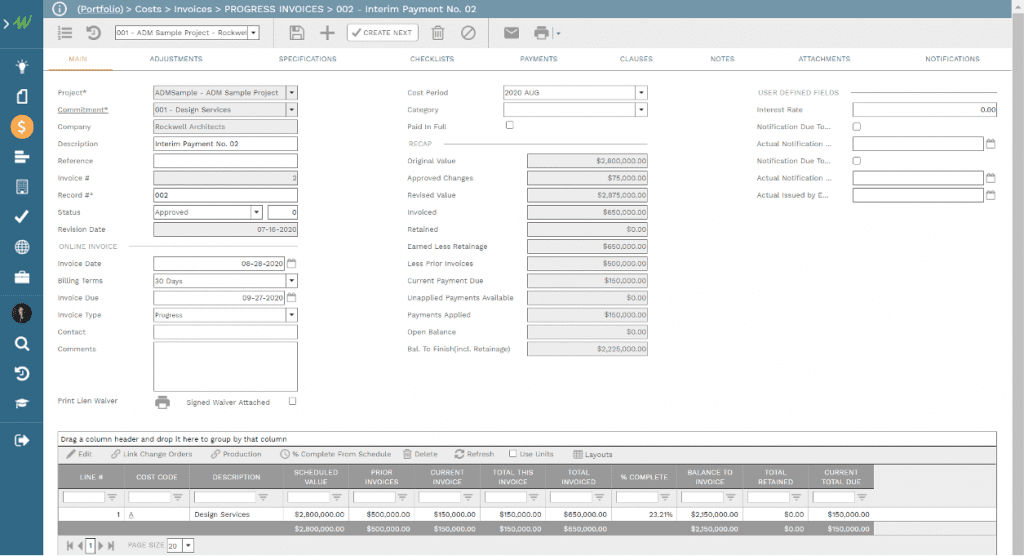
PMWeb miscellaneous invoices module is used to capture the details of actual cost incurred against a project for expenses such as insurance, guarantees, bonds, permitting authorities fees, head office overhead contribution, management expenses among others. This module can be also used to capture expenses posted by other accounting and enterprise resource planning (ERP) applications.
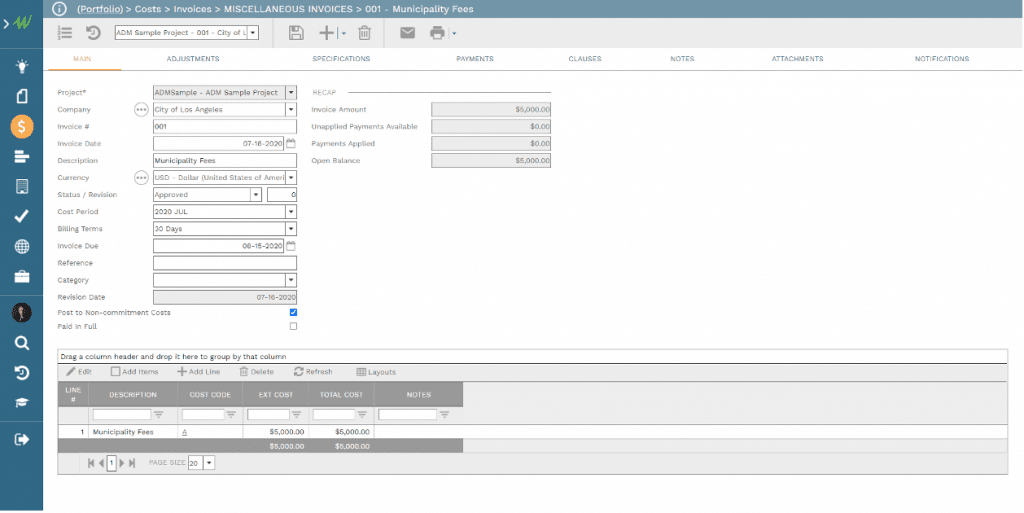
The actual payments made against contracts’ related progress invoices and miscellaneous invoices are captured at each approved invoice using the PMWeb payment tab. The details include the amount paid, method of payment, date of payment, bank details among other details needed for accounts payable payments.

Earned Value Measurement System (EVMS)
PMWeb forecast module is used to calculate and save the earned value measures for each reporting period. Those are the Planned Value (PV) which is extracted from the budget module periods projection, Actual Cost (AC) which is extracted from the interim progress invoices module, and Earned Value (EV) which is extracted from the linked Oracle Primavera or MS Project schedules. The EV value is the percent complete (% Complete) value as reported by the schedule multiplied by the budget value captured in the PMWeb budget module. The Schedule Variance (SV) is EV minus PV values whereas Cost Variance (CV) is EV minus AC. The Schedule Performance Index (SPI) is EV divided by PV and Cost Performance Index (CPI) is EV divided by AC. PMWeb forecast module includes 10 user-defined fields to allow creating the needed formulas should they are not available by default. The SPI and CPI are calculated in the commercial dashboard or any related report.
It should be noted that since the majority of capital construction projects, at least in the Middle East and Gulf Corporate Council (GCC) countries, are based on fixed lump sum contracts, great care should be given when analyzing the impact of those EVM measure variances and indices on the estimate at completion (EAC) and variance at completion (VAC) values.
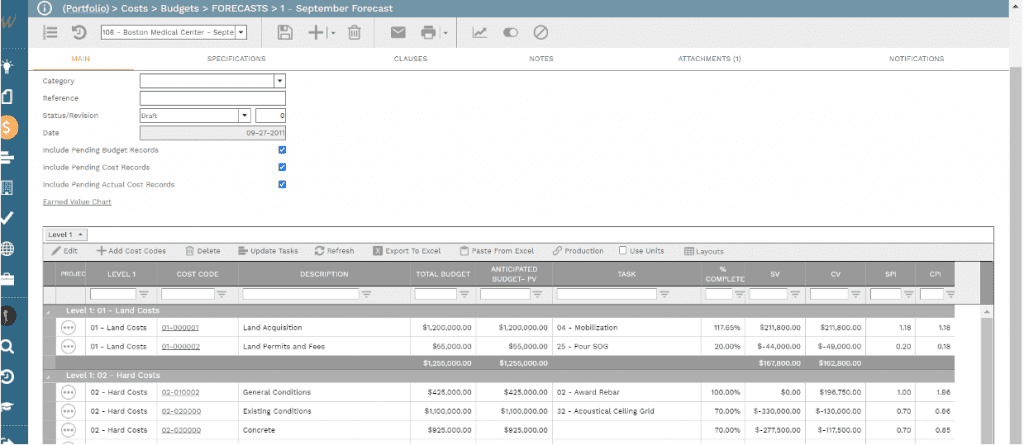
Risk Exposure
The cost associated with identified risks are captured in PMWeb risk analysis module. The common practice would be to develop different risk registers which detail the likelihood and impact of each identified risk. The risk register includes the estimated exposure of each risk before and after implementing the approved risk response actions. Those are known as pre-mitigation and post-mitigation cost exposure. Risk response actions can include risk avoidance, risk mitigation, risk transfer and risk acceptance. PMWeb risk analysis module which is always subject to be populated with new identified or emerged risks, is also used to detail closed and active risks.
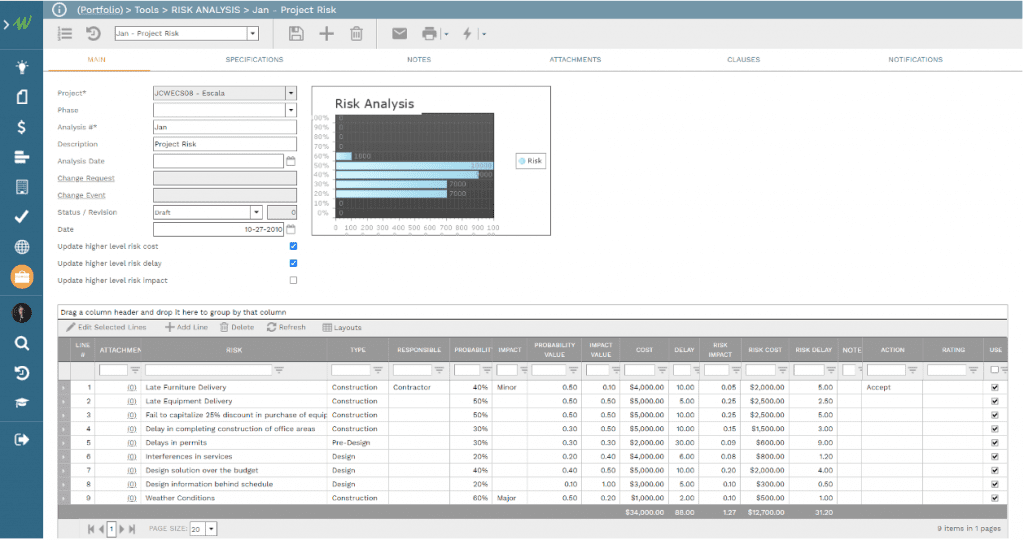
The Single Version of the Truth Commercial Performance Dashboard
The data captured from the above PMWeb modules becomes the basis for creating the desired real-time single version of the truth commercial dashboard. For each summarized commercial transaction which is presented in one of the dashboard cards, the dashboard is configured to allow the dashboard reader to drilldown and have a register of all transactions that have contributed to the reported value. The dashboard reader can click on any listed transaction to have more details including the option the check all attached documents and linked PMWeb records and imported emails. Further, the reader can review the workflow history of that particular transaction with all comments made and actions taken by who and on what date. This type of traceability and auditability ensures the trustworthiness of the reported commercial information.
